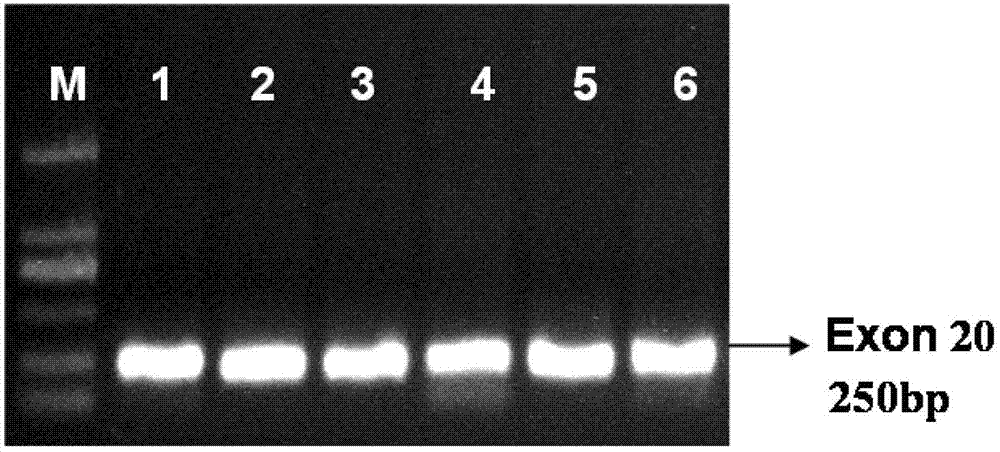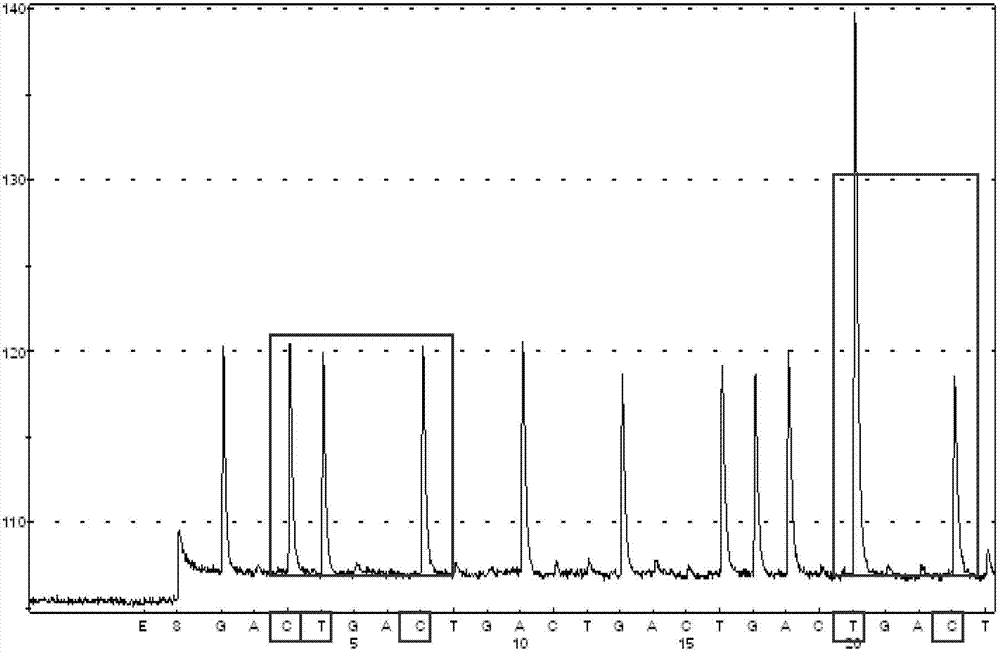Kit for detecting hot spot mutation sites in colorectal cancer PIK3CA gene
A mutation site, colorectal cancer technology, applied in the field of life science and biology, to improve the effect of chemotherapy, good specificity and high accuracy
- Summary
- Abstract
- Description
- Claims
- Application Information
AI Technical Summary
Problems solved by technology
Method used
Image
Examples
Embodiment 1
[0041] (1) Sample extraction:
[0042]1.1 Draw 300 μl of blood, add 900 μl of red blood cell lysate, mix by inversion, and let stand at room temperature for 5 minutes, during which time, invert and mix several times. Centrifuge at 10,000rpm for 1 minute (if the maximum speed of the centrifuge is not allowed, centrifuge at 3,000rpm for 5 minutes), aspirate the supernatant, leave the white blood cell pellet, add 200μl buffer GA, shake until thoroughly mixed.
[0043] 1.2 Add 20 μl proteinase K solution and mix well.
[0044] 1.3 Add 200 μl buffer GB, mix thoroughly by inverting, place at 70°C for 10 minutes, the solution should become clear, and briefly centrifuge to remove water droplets on the inner wall of the tube cap.
[0045] 1.4 Add 200 μl of absolute ethanol, shake and mix well for 15 seconds, at this time flocculent precipitation may appear, centrifuge briefly to remove water droplets on the inner wall of the tube cap.
[0046] 1.5 Add the solution and flocculent prec...
Embodiment 2
[0060] Electrophoresis identification: 1.5% agarose gel electrophoresis, 140V, 20min, gel imaging system observation. The target fragments of exon 9 and exon 20 are 258bp and 250bp respectively, and the marker is DL2000.
Embodiment 3
[0062] Preparation of the single-stranded template: Add 3 μl of streptavidin-coated magnetic beads to 50 μl of each sample of the PCR product obtained from the aforementioned amplification and incubate at room temperature for 10 minutes. The PCR products combined with magnetic beads were incubated in 75% ethanol, 0.2mol / L NaOH solution and Tris eluent for 10 seconds respectively, and denatured to obtain single-stranded DNA after sufficient reaction. The single-strand released after binding to magnetic beads was suspended in 45 μl of annealing buffer (100 mM Tris-acetate pH7.75, 20 mM Mg-acetate) (containing 10 pmol of sequencing primers). Incubate at 80 °C for 2 min, then leave at room temperature for 5 min.
PUM
 Login to View More
Login to View More Abstract
Description
Claims
Application Information
 Login to View More
Login to View More - R&D
- Intellectual Property
- Life Sciences
- Materials
- Tech Scout
- Unparalleled Data Quality
- Higher Quality Content
- 60% Fewer Hallucinations
Browse by: Latest US Patents, China's latest patents, Technical Efficacy Thesaurus, Application Domain, Technology Topic, Popular Technical Reports.
© 2025 PatSnap. All rights reserved.Legal|Privacy policy|Modern Slavery Act Transparency Statement|Sitemap|About US| Contact US: help@patsnap.com



